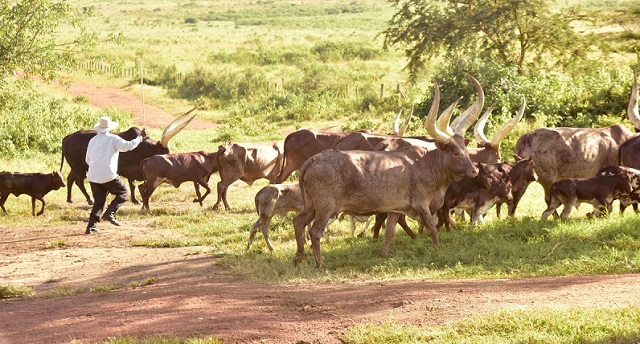
Only developed countries including the US, China, India, some in Europe and South America have well–established gene banks
Kampala, Uganda | ISAAC KHISA | For the recent decades, Africa’s indigenous animals such as the East Africa’s sinewy Ankole cattle; a product of the centuries of selection for traits adapted to harsh conditions, have been threatened with the imported bred animals triggering panic in the livestock keeping communities that the indigenous materials may at one point become unavailable for utilization for the future generation.
But the good news is that the genes of these indigenous animals will now be kept in various gene banks across the continent.
Uganda through the National Animal Genetic Resource Centre and Data Bank (NAGRIC & DB) Entebbe, will conserve and store animal genetic resources on behalf of 12 countries in the East African region.
These include; Uganda, Kenya, Somalia, Eritrea, Djibouti, Tanzania, Rwanda, Burundi, Ethiopia, Sudan, and South Sudan.
Dr. Charles Lagu, the executive director at NAGRIC & DB who also doubles as the focal person for the regional facility, said the gene bank will help rescue animal genetic resources that are currently threatened or facing extinction.
“We want to have these gene banks such that in case something happens, we can recreate these animals, develop new ones or carryout further research. This is to ensure that these good indigenous breeds are not lost,” he said.
This comes more than a decade since the Food and Agriculture Organisation (FAO) in partnership with the International Livestock Research Institute (ILRI) and other research groups released a report titled “The State of the World’s Animal Genetic Resources” showing that nearly 70 per cent of the entire world’s remaining unique livestock breeds are found in developing countries, and that there was need to establish gene banks in Africa to store her semen and embryo due to their rich genetic diversity.
This prompted the African Union through its technical office, African Union Inter-African Bureau for Animal Resources (AU-IBAR) with the support of European Union, to set up the regional gene banks to act as seed haven for various genetic material drawn from of indigenous breeds that continue to contribute to the social fabric of the African people and tell the historical origin and background of the local population.
Currently, only a few developed countries including the US, China, India, some in Europe and South America have well–established gene banks for their animal diversity.
Dr Mary Mbole-Kariuki, the Genetics Project’s Data Management expert at AU-IBAR, said the new development comes at the time the Ankole cattle that is raised across East and Central Africa was being replaced by black and white Friesian cows and that they will disappear in the next few years.
“Definitely, (it will be) a very big disaster for the East African region,” she said. “Yet, it is evident that drought and disease tolerant attributes are very important to the livestock keepers in the future given the eminent climate change.”
She said the regional gene banks will also serve as centres of excellence with regards to training on use of modern cryopreservation technologies by member states.
“Member states will have full access to their materials and exchange between them is encouraged to diversify their diversity,” she said.
Josefa Sacko, the commissioner for Rural Economy and Agriculture at the African Union, said they are optimistic that the regional members will take advantage of the facility and utilise it as a back-up gene bank or more pyrogenic storage for their genetic materials.
“As AU, we have proposed mechanisms in the management and administration of regional these regional gene banks across the continent,” she said.
“These mechanism include; the standard operating procedures for collection, processing, storage and transmission of genetic materials as well as accompanying material transfer agreements.”
She said the onus is now on the stakeholders in the Eastern Africa to put in place measures they consider appropriate for the management and operation of the regional banks whose sustainability will also depend on your commitment both financial and technical.
She said Uganda also need to carry out a cost estimate on how to run the facility so that it is shared among the member states for sustainability.
In addition, a separate animal gene bank that will serve the needs of a backup to provide security against accidental loss will be under the Mandate of the African Union Commission and will be established at the African Union Pan African Veterinary Vaccine Centre (AU-PANVAC).
AUPANVAC will serve as the Laboratory for the African Union Commission and will hold samples of each region, thus providing for an African ownership and security against accidental loss.
Prime Minister, Dr. Ruhakana Rugunda, said the government greatly supports the initiative and that it will ensure that it succeeds for the betterment of the regional community.
Other regional gene banks have been established in Burkina Faso to serve the West African region; Botswana to serve the Southern region, Tunisia to serve the North African region and Cameroun to serve the central African region.
****
 The Independent Uganda: You get the Truth we Pay the Price
The Independent Uganda: You get the Truth we Pay the Price


